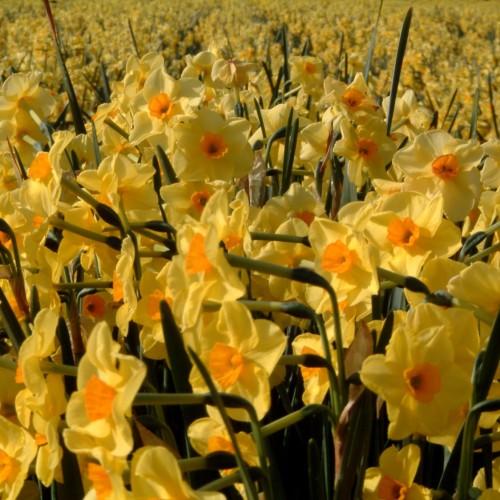
tazetta daffodil
Narcissus 'Golden Dawn'
Cycle:
Perennial
Watering:
Average
Hardiness Zone:
5 - 9
Flowers:
Flowers
Sun:
Full sun,part shade
Leaf:
Yes
Growth Rate:
High
Maintenance:
Low
Care Level:
Medium
watering
The Tazetta Daffodil (Narcissus 'Golden Dawn') is a relatively easy-to-care-for flowering plant that typically likes moist but well-drained soil. Water the daffodil deeply once a week, allowing the top centimeter of soil to dry out before watering again. During exceptionally hot weather, it may be necessary to water twice a week to keep the soil from drying out. If planted in containers, check the soil daily and water as needed. Avoid over-watering the daffodil to prevent root rot.
sunlight
Narcissus 'Golden Dawn' (Tazetta Daffodil) should be grown in indirect sunlight for 6-8 hours a day. This type of daffodil will not tolerate direct sunlight or extended periods of total shade, so it is important to find a place with plenty of natural bright light but not direct sun. An east or west facing window is often an ideal spot, and keeping the plant away from cold drafts will also be beneficial.
pruning
Tazetta daffodil (Narcissus 'Golden Dawn') plants should be pruned at the end of the blooming cycle, which is typically in late spring after the flowers have faded. Pruning can be done by removing any old, discolored, or dead foliage and flower stems. Once the foliage and flower stems have been removed, you can cut back the green foliage slightly to improve air circulation. Deadheading can also be done at this time by removing the faded, discolored blossoms. Pruning away spent blossoms encourages the plant to produce more flowers. Avoid pruning too much as this can reduce the flowering potential of the plant.
